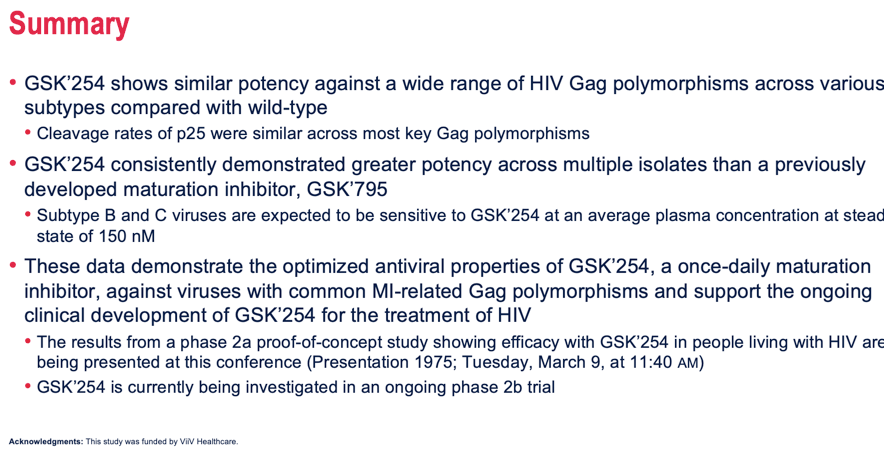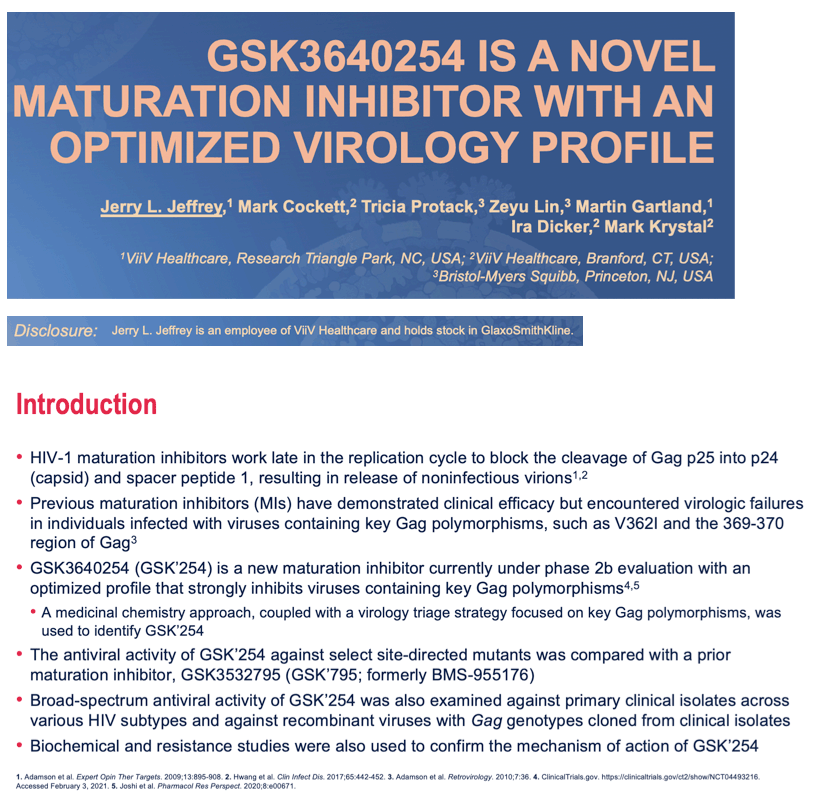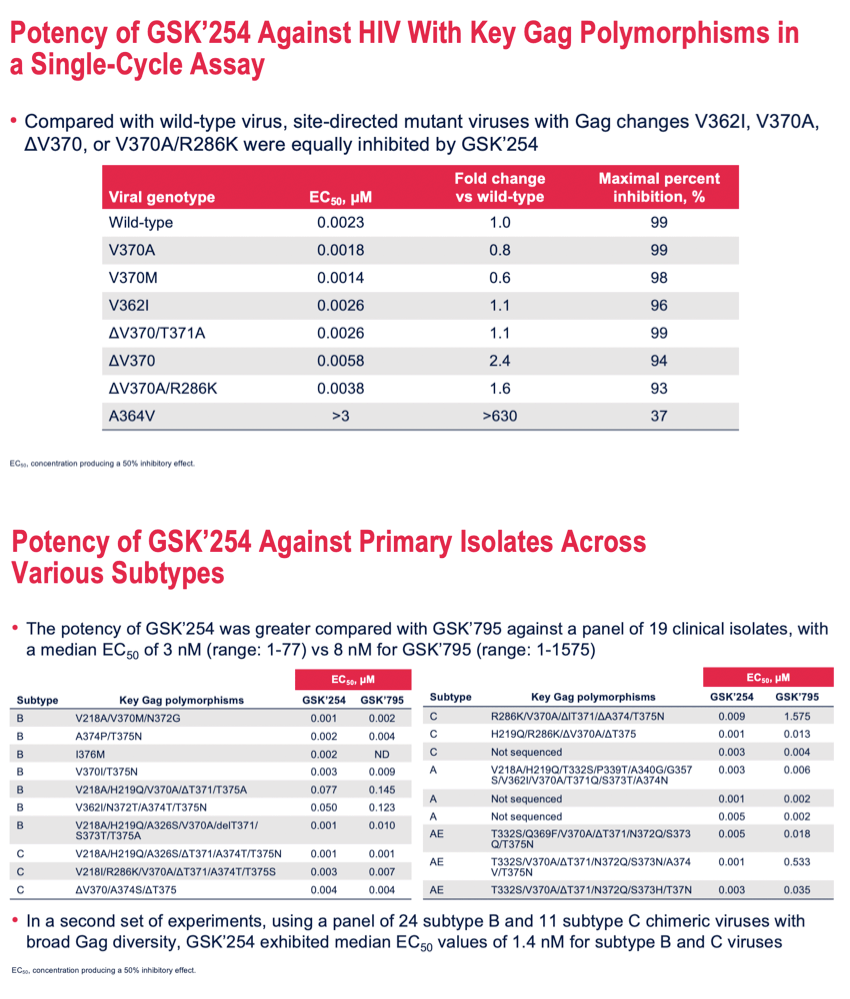 |
 |
 |
| |
GSK3640254 IS A NOVEL MATURATION INHIBITOR WITH AN OPTIMIZED VIROLOGY PROFILE
|
| |
| |
CROI 2021 March 6-10 Reported by Jules Levin
Jerry L . Jeffrey1, Mark Cockett2, Tricia Protack3, Zeyu Lin3, Martin Gartland1, Ira B. Dicker2, Mark Krystal2
1ViiV Healthcare, Research Triangle Park, NC, USA, 2ViiV Healthcare, Branford, CT, USA, 3Bristol Myers Squibb, Redwood City, CA, USA
Background: HIV-1 maturation inhibitors (MIs) work late in the replication cycle to block the cleavage of gag p25 into p24 (capsid) and Sp1, resulting
in release of noninfectious virions. Previous MIs have demonstrated clinical efficacy but have encountered virologic failures in subjects infected with viruses containing gag polymorphisms such as V362I and the 369-370 region of gag. GSK3640254 (GSK'254) is a new MI with an optimized profile that strongly inhibits viruses containing these polymorphisms.
Methods: A medicinal chemistry approach coupled with a virology triage strategy focused on key gag polymorphisms was used to identify GSK'254. The antiviral activity of GSK'254 against select site-directed mutants (SDMs) was compared to a prior maturation inhibitor, GSK3532795 (GSK'795, formerly BMS-986176). Broad spectrum antiviral activity of GSK'254 was also examined against primary isolates across various HIV subtypes and against recombinant viruses with gag genotypes cloned from clinical isolates. In addition, biochemical and resistance studies were used to confirm the mechanism of action (MoA) of GSK'254.
Results: Compared to wild-type virus, SDM viruses with gag changes V362I, V370A, Γ370, or R286K/V370A were equally inhibited by GSK'254. The potency of GSK'254 was greater compared to GSK'795 against a panel of 19 primary isolates (subtype A=3, B=7, C=6, CRF01_AE=3), with a median EC50 of 3 nM (range 1-77 nM) vs. 8 nM for GSK'795 (range 1-1575 nM). Using a panel of 24 Subtype B and 11 Subtype C chimeric viruses with broad gag diversity, GSK'254 exhibited median EC50 values of 1.4 nM (range 0.48-6.9 nM) and 1.4 nM (range 0.85-1.9 nM) for the Subtype B and C viruses, respectively. GSK'254 retained some potency against an A364V SDM (EC50=143 nM) but exhibited a less than optimal maximal percent inhibition (72.5%) and was selected in resistance studies in cell culture. In vitro MoA studies demonstrated that GSK'254 inhibited cleavage of p25 for consensus subtype B gag as well as gag proteins with relevant SDMs.
Conclusion: These data demonstrate the optimized antiviral properties of GSK'254, a once-daily maturation inhibitor, against viruses with common MI-related gag polymorphisms. GSK'254 has been shown to provide significant reduction in viral load in people living with HIV in a phase 2A proof-of-concept study. Together, these data support the ongoing clinical development of GSK'254 in HIV-1 infected individuals.




|
| |
|
 |
 |
|
|